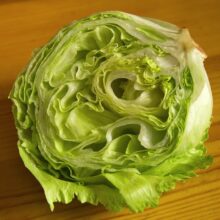The Ultimate Guide to Creating a Weight Loss Diet Chart: Tips and Tricks
The Ultimate Guide to Creating a Weight Loss Diet Chart: Tips and Tricks
losing weight can be a challenging and overwhelming process, but having a clear plan can make all the difference. One effective way to get started is by creating a weight loss diet chart. A diet chart can help you track your daily food intake, monitor your progress, and stay motivated. In this article, we’ll provide you with a step-by-step guide on how to create a weight loss diet chart that works for you.
Why Create a Weight Loss Diet Chart?
Before we dive into the “how-to” guide, let’s first understand why creating a diet chart is an essential step in achieving your weight loss goals. Here are a few reasons why:
* Clear planning and organization: A diet chart helps you plan and organize your meals, ensuring you’re eating the right foods and portion sizes.
* Accurate tracking: By tracking what you eat, you can identify patterns, make changes, and make informed decisions to support your weight loss journey.
* Increased accountability: A diet chart keeps you accountable and motivated, as you can see your progress and celebrate small victories.
* Better portion control: A diet chart helps you control your portion sizes, ensuring you’re not overeating or under-eating.
Step 1: Set Your Goals
Before creating your diet chart, take some time to set your goals. Ask yourself:
* What is my target weight loss goal?
* What is my current diet and lifestyle like?
* What changes am I willing to make to achieve my goal?
Write down your answers to these questions, and you’ll have a clear understanding of what you want to achieve and how you plan to get there.
Step 2: Choose a Diet Chart Template
You don’t have to start from scratch! There are many diet chart templates available online, or you can create your own using a spreadsheet program like Google Sheets or Microsoft Excel. Consider the following features when choosing a template:
* Flexibility: Can you customize the columns and rows to fit your needs?
* Space for notes: Can you add notes or comments to track your progress and make adjustments?
* Mobile access: Is the chart accessible on your mobile device, so you can track your progress on-the-go?
Step 3: Plan Your Meals
Now it’s time to plan your meals! Consider the following:
* Breakfast, lunch, and dinner: What do you usually eat for each meal? Are there any specific foods you want to include or avoid?
* Snacks: What healthy snacks do you usually reach for? Are there any times of the day when you tend to snack?
* Portion sizes: What are the recommended serving sizes for each food group?
Use your notes from Step 1 to guide your meal planning. Be realistic and flexible – remember, this is a guide, not a rigid plan.
Step 4: Track Your Progress
This is where the magic happens! Use your diet chart to track your progress. Make sure to:
* Record every bite: Log every single thing you eat, even if it’s just a small snack or a drop of coffee.
* Monitor your progress: Review your chart regularly to identify patterns, make adjustments, and celebrate small victories.
* Make adjustments: Don’t be too hard on yourself if you miss a day – get back on track and make changes as needed.
Step 5: Review and Adjust
Congratulations! You’ve made it to the end of the steps! Take some time to review your diet chart and make any necessary adjustments. Ask yourself:
* What’s working well?: Are there any areas that need improvement?
* What changes can I make?: Are there any foods or portions that need to be adjusted?
* How can I stay accountable and motivated?: Are there any strategies you can use to stay on track and reach your weight loss goals?
By following these steps, you’ll be well on your way to creating a weight loss diet chart that works for you. Remember to be patient, stay consistent, and celebrate your progress – you got this!





